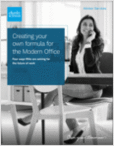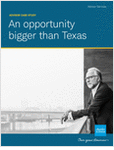Warning: What follows is a lot of numbers, but the main takeaway is that it is indefensible for advisors to use active portfolios for their clients’ money because it is all but guaranteed that they will underperform.
That is one conclusion from an exhaustive study that veteran ETF advisor Rick Ferri presented at ETF.com’s Inside ETFs conference Tuesday in Hollywood, Fla.
Ferri, working with Betterment’s Alex Benke, published the study last year, comparing passive funds against 5,000 randomly selected active portfolios and viewing them across 32 different portfolio strategies.
The indexing solution won 82.9% of the time on average, and in the small percentage where active funds outperformed the median outperformance was 0.5%, leading the Troy, Mich.-based advisor to declare: “You weren’t paid enough to take that risk.”
He added that, theoretically, if outperformance were high, then investing in active funds just might be worthwhile despite the low probability of a payoff.
But outperformance, which varied across the 32 portfolio strategies, was never high, and Ferri pointed out that if an advisor correctly chose a winning active strategy, there was a high likelihood of giving back that alpha by realizing an even greater loss in an active category with large underperformance.
So, for example, if an advisor chose one of the few active bond funds that beat bond index funds — and the median outperformance of such a fund was just .23% in one of the scenarios — that same advisor choosing one of the losing active equity funds (and most active funds were losers) purchased a -2.01% median underperformance on the stock side.
In conducting the study, Ferri and Benke went out of their way to be fair by using investor share Vanguard funds (rather than cheaper Admiral shares) while scrubbing out the highest-cost active funds such as B and C shares, redemption fees and taxes; only no-load and A-share active portfolios were considered. They also used data scrubbed of no longer extant funds to further eliminate any bias.
Despite not factoring all of active funds’ potential disadvantages, Ferri says that passive funds outperformed in all asset classes and across time.
“The longer clients are in all-index portfolios, the higher the probability of outperformance,” Ferri said.







 January 28, 2014 at 11:49 AM
January 28, 2014 at 11:49 AM










 Copyright © 2024 ALM Global, LLC. All Rights Reserved.
Copyright © 2024 ALM Global, LLC. All Rights Reserved.